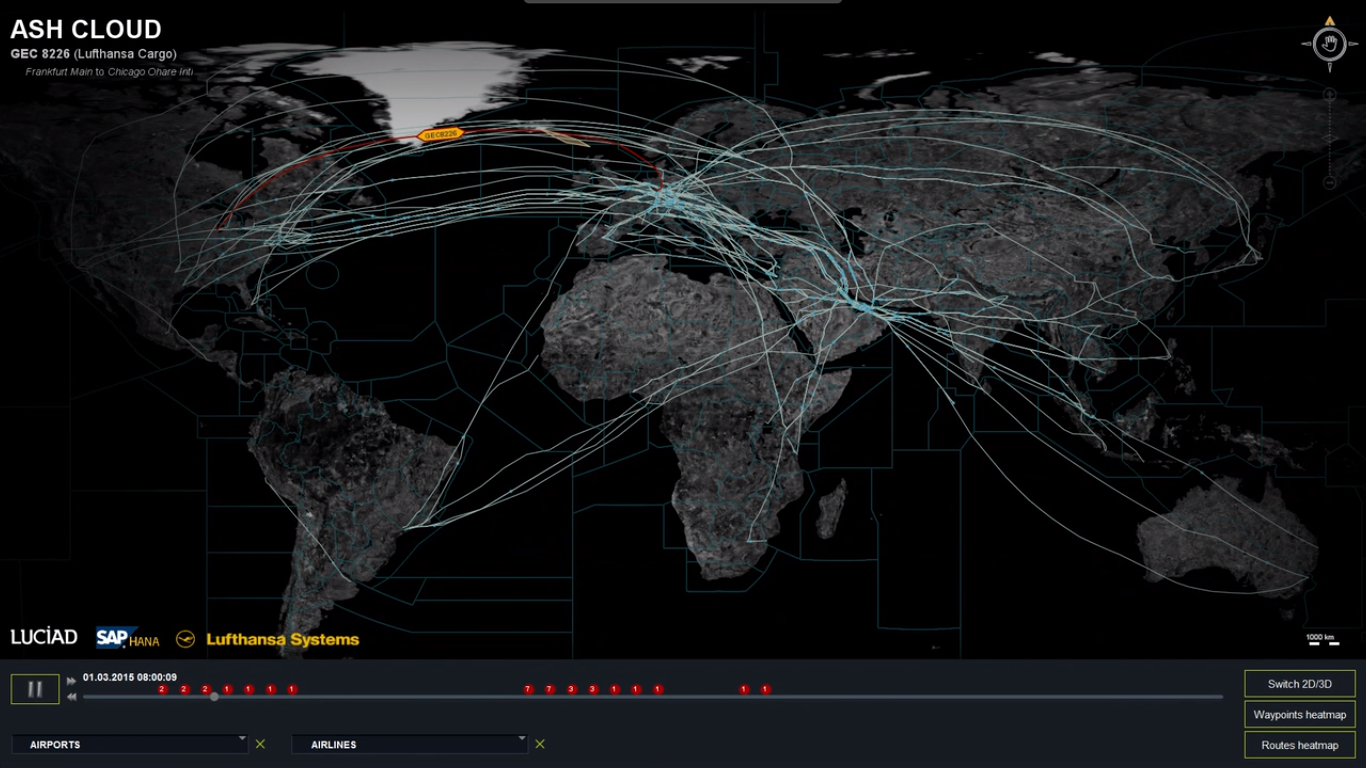Last October, Hexagon acquired Luciad, a Belgian geospatial software provider specializing in visualization and analysis of real-time location intelligence. Their software will be integrated in various key initiatives from Hexagon´s geospatial division.
Luciad was founded in 1999 as a spin-off from a local Belgian university. At the moment, the company employs over 100 people in 8 countries, and counts over 100,000 users of its technology globally. Luciad’s solutions enable users to perform advanced visual analytics and implement scalable solutions that are used in public safety, smart cities, defense and intelligence.
Luciad’s product portfolio lists browser, desktop, mobile and server-based solutions, as well as custom solutions for air traffic control and a viewer for AIXM. AIXM is a data-exchange model for aeronautical information services in digital format, which itself is based on GML, an OGC based XML based standard for geographical features. The company has its own developer platform, which is a dedicated portal for Luciad software developers, accessible from the company’s website.
Luciad’s data approach
Luciad´s approach to collecting, analyzing and visualizing data fits Hexagon pretty well. In the translation from data collection to delivering information from that data, time is a crucial element. This is where Luciad can make a difference, as they support the rapid fusion of the real and digital worlds. Earlier this year, Luciad CEO Marc Melviez explained the company´s approach to data. He stated that users of Luciad’s products have grown up with video game technology and expect the user interface to work as smoothly and quickly as their game consoles at home.
He stated that enablers of Luciad’s technology to handle massive amounts of data that is changing over time are fourfold: First, there is a direct connection to the data instead of a workflow to extract transform, and load the data and create a tile store. Processing power is used to generate imagery immediately. Second, there’s a model/view paradigm that separates the data from representation, saving time once the system´s logic in place. This way, it´s easier to add and remove types of data in the field instead of doing a request for modification that will take a long time. Third, a system needs to be performant to be able to interact efficiently with the data, if necessary with a whole database in-memory of a GPU. Fourth, API needs to designed be so that users can tailor it to their own precise requirements.

Integration with Hexagon technology
Luciad will operate in Hexagon´s Geospatial Division and their technology can be integrated into Hexagon´s Smart Build, Smart Factory, Real City and Digital Reality solutions. When announcing the acquisition, Hexagon explained its interest in Luciad, stating that it will help them to deliver smart digital realities by enhancing their Smart M.App platform, since Luciad technology offers 3D, 4D, and 5D capabilities. Here, 4D relates to real-time sensor feed integration, whereas 5D refers to dynamic analytics capabilities. Hexagon´s Smart M.App platform is to meant for developers and organizations to build lightweight and dynamic applications and combines content, business workflows, and geoprocessing into a single application.






